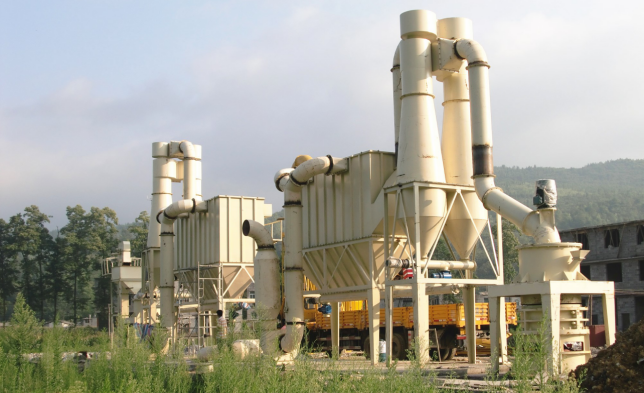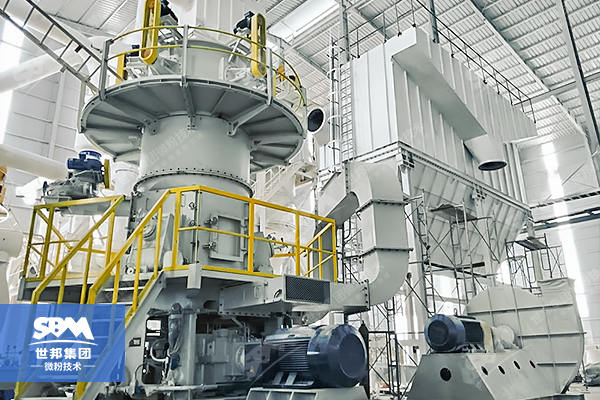Project Name: Calcite powder grinding mill machine plantProcessing material: calcite
Finished product fineness: 200-400 mesh
Finished product output: 120000 tons per year
Finished product use: 200 mesh calcite powder: used in building materials, cement mixing plant, asphalt mixing plant and other industries. 400 mesh calcite powder: used in power plant desulfurization powder, filler and other industries.
Equipment configuration: HGM Micro Powder Grinding Mill/ Powder Surface Coating Machine/ Hammer Crusher/ Bucket Elevator
PROJECT INTRODUCTION
Located in an industrial park in Xingcheng City, Xingcheng high calcium Co., Ltd. is a large-scale ultra-fine powder production enterprise in Xingcheng city. The company has an experienced, high-quality and professional R & D team, which is mainly engaged in the research, processing, production and sales of mineral micro powder, provides high-quality products and technical support for downstream customers, and the company's products are sold all over the country.
The customer has a construction area of about 15000 square meters. At present, it operates two high-end calcium carbonate micro powder production lines with an annual output of 120000 tons. The finished calcium carbonate micro powder is widely used in power plant desulfurization powder, building materials, cement mixing plant, asphalt mixing plant and other industries. The customer is equipped with SBM Ultrafine Powder Tech's HGM series ultra-fine powder grinding mill, which is designed for the new mineral powder processing technology. The products produced have the advantages of high whiteness, stable color and uniform particle size distribution.
The customer has always adhered to the principle of "customer first", adhered to honesty and trustworthiness, and adhered to the quality-oriented business philosophy. At the same time, the company provides downstream customers with pre-sales technical consultation, in-sales product guidance and after-sales quality assurance services to ensure adequate supply of products. According to the different needs of downstream customers, micro powder series products can also be customized.
THE PROJECT SITE
Calcite Powder Grinding Mill Plant
HGM Calcite Powder Grinding Mill Machine
Calcite Powder Production Line
CLIENT FEEDBACK
Reasonable product design, stable performance, and intelligent operation are our weapon to seize the market and win customers!
Customer: Mr. Cui
PROJECT BENEFITS

Energy saving and environmental protection, green grinding
The dust of the production line is collected by a negative pressure dust removal system and placed in a fully enclosed finished product warehouse, which realizes no dust spillage, a clean production environment, and discharge conforms to international standards.
High cost performance, considerable investment income
The fine calcium carbonate particles produced by this project have excellent shapes and better quality after being modified by the CLG powder surface modifier. They are well received in the market and have a high profit per ton.
Can run continuously for 24 hours
The reducer has circulating oil lubrication and circulating water cooling system to ensure the continuous operation of the ring roller mill for 24 hours.
Full process service, save time and worry
SBM Ultrafine Powder Technology Co.,Ltd. project design, equipment production, installation, commissioning, and after-sales service are integrated. The whole process service is convenient for users, and it has won time for the smooth commissioning of the project in a short time.
EQUIPMENT CONFIGURATION
Extended reading:
What is the difference between dolomite and calcite?
What is calcite?
The main component of calcite is calcium carbonate, and its Mohs hardness value is 3.0. Pure calcite is white. Limonite and siderite give calcite a yellow-brown pattern and color.
Usually after calcite is cut, there are intact or destroyed biological fossils inside the stone. Unless calcite forms a reef, generally speaking, calcite produced in the sea has a layered structure. Its structure may be dense, or it may have granular pores.
Calcite
What is dolomite?
The main component of dolomite is calcium magnesium carbonate, and its Mohs hardness value (MOH) is between 3.5 and 4. The main components of dolomite ore are calcium carbonate and magnesium carbonate. The appearance is almost the same as calcite. In fact, dolomite is often found in areas where calcite deposits are found. Most dolomite deposits contain a certain percentage of calcite.
Dolomite
The method of distinguishing dolomite and calcite
Usually two methods of hardness test and acid test are used to distinguish between calcite and dolomite. The Mohs hardness test method is to use another metal with a known hardness to scrape this stone. Therefore, the hardness value of dolomite is between 3 and 4.
The acid test method is to apply diluted hydrochloric acid to the surface of the stone. The calcite reacts strongly, while the dolomite reaction is not obvious, and the surface will form a powder. If the above test results are not obvious, you need to do laboratory analysis.
Generally, dolomite and calcite can be distinguished according to the following points:
1. HardnessThe hardness of dolomite is relatively high, with a Mohs hardness of 3.5 to 4.0; while the hardness of calcite is only about 3.0 with a Mohs hardness.
2. ProportionThe specific gravity of dolomite is also larger than that of calcite, the former is 2.8 to 2.95, and the latter is 2.7.
3. Light splitting rate (Identified by the oil stain method)
| Category |
NO |
NE |
| Dolomite |
1.68 |
1.500 |
| calcite |
1.658 |
1.486 |
4. Compressive strength (expressed by the force received per unit area)
The compressive strength of dolomite is less than 3000 kg per square centimeter, and the compressive strength of calcite is less than 1000 kg per square centimeter.
5. Chemical composition.Dolomite contains a significant amount of MgO, generally 0.4 to 20%, while calcite has a low MgO content, generally only 0.2 to 8.0%.
6. The hotter the dolomite is, the hotter the manganese acid is; the color changes when the cobalt nitrate solution is burned; the crystal faces are curved, which can be distinguished from calcite.
7. With the increase of calcination temperature, the two are different in the changes of specific gravity, compressive strength and linear shrinkage.
8. The main components of dolomite ore are calcium carbonate and magnesium carbonate. The biggest difference between the two is that the important basis for dolomite is that the content of dolomite minerals in the rock is not less than 50%. In addition, dolomite is a porous stone. Because the chemical components that make up dolomite are not sensitive to acidic substances, dolomite has better weather resistance.









 India
India
 Vietnam
Vietnam
 China
China